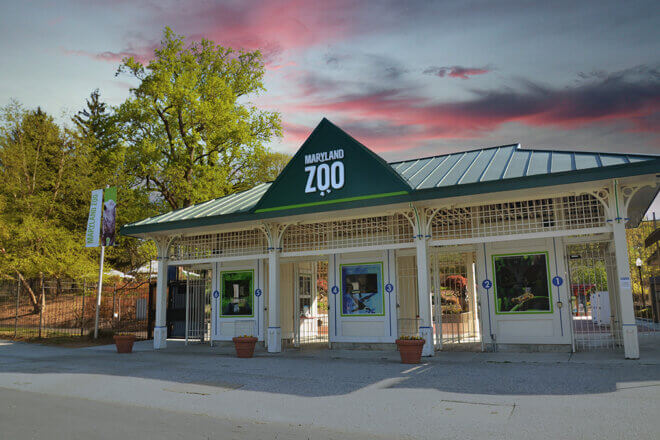The Maryland Zoo is happy to announce that two female cheetah (Acinonyx jubatus), have arrived from the San Diego Wildlife Safari Park to take up residence in the African Journey section of the Zoo. Tuli and Teep are eight-year-old cheetah littermates, born at Fossil Rim Wildlife Center in Glen Rose, Texas in 2006, which have been living in San Diego for the past two years. “We are very happy to welcome these two cheetah to the Zoo,” said Mike McClure, general curator at the Zoo. “With the recent passing of Alix, we missed working with these amazing cats.”
The cheetah sisters arrived late in the evening of July 23 and will be quarantined while on exhibit. “As standard protocol we normally quarantine animals at the Zoo hospital for the first 30 days after their arrival,” continued McClure. “In this case, we want the staff with the most extensive cheetah experience to work with them immediately, so they will be quarantined in the exhibit area. As a result, we can not only keep a close eye on their health and welfare after their travels, but also have them outside exploring and meeting our guests.”
Tuli and Teep moved to The Maryland Zoo at the recommendation of the Association of Zoos & Aquariums (AZA) Cheetah Species Survival Plan (SSP). The Cheetah SSP is a committee of individuals who work in accredited zoos and are experts in cheetah husbandry, training and conservation. “North American zoos that have cheetah, including us, work cooperatively on research and conservation on behalf of these cats,” said McClure. “Educating people is critical, not only here but also in Africa. If local people in Africa come to see the cheetah as an asset in terms of promoting ecotourism, they will move forward into the next generation eager to save this magnificent cat and safeguard its future.”
Cheetah, the world’s fastest land mammal, are also the most endangered cat in Africa. Historically native to Africa and Asia from South Africa to India, cheetah can now only be found in parts of eastern, central and southwestern Africa, as well as a small portion of Iran. Cheetah are facing extinction due to habitat loss, the illegal wildlife trade and human-wildlife conflict. To help combat some of the losses, conservationists have helped ranchers in Namibia learn to coexist with cheetah and to adopt other ways to defend their herds, such as using guard dogs and guard donkeys for protection, rather than shooting the cheetah. The Maryland Zoo in Baltimore has partnered with Cheetah Conservation Fund (www.cheetah.org) for many years to support conservation efforts in the wild.
Zoo visitors will also notice some new features in the cheetah exhibit. “While we were waiting for the cheetah to arrive, the Animal Department exhibits team developed some enhancements for their habitat,” stated McClure. “They designed and sculpted a hot rock similar to the one we have for lions. It will have a heating element in it to allow for a nice warm vantage point for the cats to lie on in the cooler months and it will provide a great view of them from the window for guests.” The team also built a stone cave that will provide additional shelter, as well as situating various tree trunks for climbing from trees that have fallen around zoo grounds.
“We are lucky to have such talented and creative people on staff who not only know what will work for each species, but who can also make it happen,” said McClure. “We are really looking forward to having Tuli and Teep here at the Zoo and continuing our conservation and education efforts on behalf of cheetah in the wild.”






Share this article